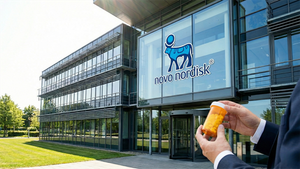– Study Met Primary Safety Endpoint; Nedosiran Shown to be Generally Safe and Well Tolerated in Patients With PH3 –
– Although Trial Did Not Meet Prespecified Secondary Efficacy Endpoint, Data Showed Encouraging Trends in Urinary Oxalate Reduction With Nedosiran Treatment –
– Company on Track to Submit Nedosiran New Drug Application (NDA) to the U.S. Food and Drug Administration (FDA) for Treatment of PH Type 1 (PH1) in Fourth Quarter of 2021 –
Dicerna Pharmaceuticals, Inc. (Nasdaq: DRNA), a leading developer of investigational ribonucleic acid interference (RNAi) therapeutics, today announced top-line results from its PHYOX4 study designed to evaluate the safety and tolerability of a single subcutaneous dose of nedosiran, Dicerna’s late-stage investigational GalXC™ RNAi therapeutic candidate in development for primary hyperoxaluria (PH), compared to placebo in patients with PH type 3 (PH3). Nedosiran demonstrated safety and tolerability results in this trial consistent with previously reported studies in the PHYOX clinical development program. Patients administered nedosiran also showed a trend in urinary oxalate (Uox) reduction; however, these reductions did not meet prespecified secondary efficacy endpoint criteria. Dicerna plans to submit an NDA to the FDA for nedosiran for the treatment of PH1 in the fourth quarter of 2021.
“The favorable safety and tolerability results, coupled with the encouraging trends in Uox reduction observed in the first clinical trial of any investigational therapy in patients with PH3, provide important initial data for nedosiran in PH3,” said Shreeram Aradhye, M.D., Executive Vice President and Chief Medical Officer at Dicerna. “While we have refined our near-term nedosiran strategy primarily to focus on the treatment of PH1, there is a significant unmet medical need in PH3, and we plan to analyze these data further as part of our discussions to out-license the commercialization of nedosiran. I would like to extend our sincere thanks to the patients, caregivers, investigators and their staff involved in the PHYOX4 study for their important contributions.”
The PHYOX4 trial (NCT04555486) was a randomized, placebo-controlled, double-blind, multicenter study evaluating the safety and tolerability of a single subcutaneous dose of nedosiran compared to placebo in patients with PH3 who had at least one kidney stone event in the prior 12 months (nedosiran n=4; placebo n=2). All reported adverse events (AEs) were mild and unrelated to nedosiran treatment. The most commonly reported AE was back pain. No serious AEs were reported in the study.
No subjects in either group achieved the prespecified secondary efficacy endpoint, which was a greater than 30% decrease from baseline in 24-hour Uox excretion on at least two consecutive visits over the three-month observation period. However, all patients administered a single dose of nedosiran demonstrated Uox reductions relative to baseline at one or more time points during the three-month period.
About Primary Hyperoxaluria (PH)
Primary hyperoxaluria (PH) is a family of ultra-rare, life-threatening genetic disorders that initially manifest with complications in the kidneys. There are three known subtypes of PH (PH1, PH2 and PH3), each resulting from a mutation in one of three different genes. These genetic mutations cause enzyme deficiencies that result in the overproduction of oxalate, which is an end-product of metabolism. Excess production and accumulation of oxalate leads to recurrent kidney stones, nephrocalcinosis and chronic kidney disease that may progress to end-stage renal disease requiring intensive dialysis. Compromised renal function eventually results in the accumulation of oxalate in a wide range of organs including the skin, bones, eyes and heart. In the most severe cases, symptoms start in the first year of life. A combined liver-kidney transplant may be undertaken to resolve PH1 or PH2, but it is an invasive solution with limited availability and high morbidity that requires lifelong immune suppression to prevent organ rejection. Genetic studies suggest approximately 8,500 people in the U.S. are affected by PH, and researchers estimate that more than 80% of patients remain undiagnosed.1 There is currently only one approved therapy available that is limited to the treatment of patients with PH1.
About Nedosiran
Nedosiran is in development for the treatment of primary hyperoxaluria (PH) as part of the PHYOX clinical development program and is Dicerna’s most advanced RNAi drug candidate utilizing our proprietary GalXC RNAi technology. Nedosiran is designed to inhibit production of the hepatic lactate dehydrogenase (LDH) enzyme – an enzyme that catalyzes the final step in the glyoxylate metabolism pathway that can lead to oxalate overproduction in patients with PH.
About Dicerna Pharmaceuticals, Inc.
Dicerna Pharmaceuticals, Inc. (Nasdaq: DRNA) is a biopharmaceutical company focused on discovering, developing and commercializing medicines that are designed to leverage ribonucleic acid interference (RNAi) to silence selectively genes that cause or contribute to disease. Using our proprietary GalXC™ and GalXC-Plus™ RNAi technologies, Dicerna is committed to developing RNAi-based therapies with the potential to treat both rare and more prevalent diseases. By silencing disease-causing genes, Dicerna’s GalXC platform has the potential to address conditions that are difficult to treat with other modalities. Initially focused on disease-causing genes in the liver, Dicerna has continued to innovate and is exploring new applications of its RNAi technology with GalXC-Plus, which expands on the functionality and application of our flagship liver-targeted GalXC technology to tissues and cell types outside the liver, and has the potential to treat diseases across multiple therapeutic areas. In addition to our own pipeline of core discovery and clinical candidates, Dicerna has established collaborative relationships with some of the world’s leading pharmaceutical companies, including Novo Nordisk A/S, Roche, Eli Lilly and Company, Alexion Pharmaceuticals, Inc., Boehringer Ingelheim International GmbH and Alnylam Pharmaceuticals, Inc. Between Dicerna and our collaborative partners, we currently have more than 20 active discovery, preclinical or clinical programs focused on cardiometabolic, viral, chronic liver and complement-mediated diseases, as well as neurodegenerative diseases and pain. At Dicerna, our mission is to interfere – to silence genes, to fight disease, to restore health. For more information, please visit www.dicerna.com.
Cautionary Note on Forward-Looking Statements
This press release includes forward-looking statements. Such forward-looking statements are subject to risks and uncertainties that could cause actual results to differ materially from those expressed or implied in such statements. Examples of forward-looking statements include, among others, statements we make regarding our product candidates and the development thereof, such as the Company’s PHYOX clinical development program for nedosiran in PH; the impact of the results from the PHYOX4 trial of nedosiran for the potential treatment of PH3, including any further analysis of the results, as well as its potential impact on the broader PHYOX clinical development program; the therapeutic potential of our product candidates, such as nedosiran; the Company’s refined near-term nedosiran strategy to focus primarily on the treatment of PH1; the Company’s regulatory plans and timelines for nedosiran, including our planned submission of an NDA to the FDA for nedosiran for the treatment of PH1; our business and operations, including the discovery, development and commercialization of our product candidates and technology platform, and the therapeutic potential thereof; our collaboration with partners and any potential future collaborations.
The process by which investigational therapies, such as nedosiran, could potentially lead to an approved product is long and subject to highly significant risks. Applicable risks and uncertainties include those relating to Dicerna’s clinical research and other risks identified under the heading "Risk Factors" included in the Company’s most recent filings on Forms 10-K and 10-Q and in other future filings with the Securities and Exchange Commission. These risks and uncertainties include, among others, the cost, timing and results of preclinical studies and clinical trials and other development activities by us and our collaborative partners and any potential future collaborations, including any potential commercialization partner(s) for nedosiran; our ability to enter into an agreement with any commercialization partner(s) for nedosiran on favorable terms, if at all; data from preclinical studies and earlier clinical trials may not be predictive of results from subsequent preclinical studies and clinical trials; the reliance of Dicerna on contract manufacturers to supply its products for research, development and commercialization and the risk of supply interruption from one or more such contract manufacturers; the potential for additional or future data to alter initial, interim and preliminary results of clinical trials; the impact of the ongoing COVID-19 pandemic on our business operations and those of the third parties and collaboration partners with whom we engage; the timing, plans and reviews by regulatory authorities of our marketing applications, such as for our planned submission to the FDA of an NDA for nedosiran in PH1, and any comparable foreign applications for nedosiran in PH1 by any commercialization partner(s) for nedosiran, if any; alignment with the FDA on the regulatory pathway to approval for nedosiran; the ability to secure, maintain and realize the intended benefits of collaborations with partners, including any commercialization partner(s) for nedosiran; market acceptance for approved products and innovative therapeutic treatments; competition; the possible impairment of, inability to obtain, and costs to obtain intellectual property rights; possible safety or efficacy concerns that could emerge as new data are generated in R&D and following commercialization; and general business, financial and accounting risks and litigation. The forward-looking statements contained in this press release reflect Dicerna's current views with respect to future events, and Dicerna does not undertake and specifically disclaims any obligation to update any forward-looking statements.
1 Hopp K, et al. J Am Soc Nephrol. 2015;26(10):2559-2570 and U.S. Census Bureau population on a date: February 20, 2020. United States Census Bureau website, 2020.
View source version on businesswire.com: https://www.businesswire.com/news/home/20211019005355/en/
Contacts
Media:
Amy Trevvett
+1 617-612-6253
atrevvett@dicerna.com
Investors:
Kristen Sheppard, Esq.
+1 617-514-2275
ksheppard@dicerna.com




